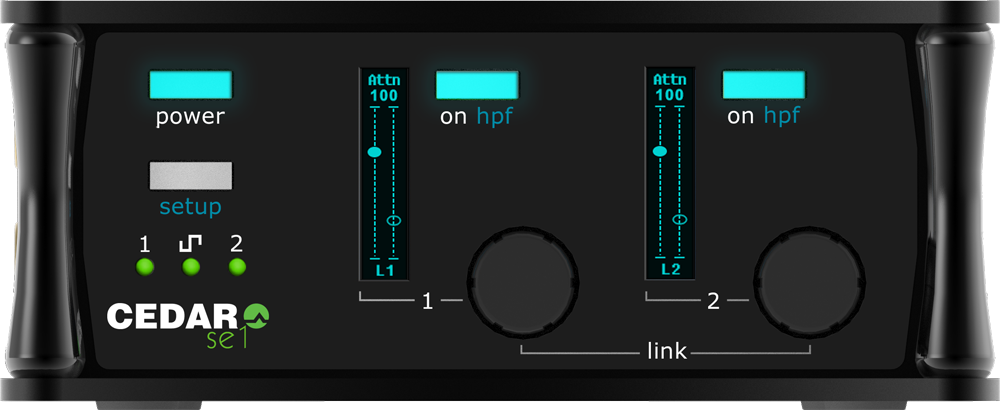CEDAR SE 1 - FAQs

Why does the SE 1 offer an optional -18dB/oct high-pass filter on each of the inputs?
In severe cases, low-frequency noise can impede the performance of the SE 1's noise reduction algorithm. The high-pass filters (which should have minimal or no effect upon the wanted speech) remove this noise before presenting the audio to the process.
How do I save settings on the SE 1 so that it remembers them the next time I switch it on?
The SE 1 saves its settings automatically five seconds after you last adjusted a control, and when you press the power on/off button.
What is the difference between the SE 1's processes and the DNS process used within other CEDAR products?
CEDAR's DNS processes were developed to remove noise while retaining the authenticity of the wanted (voice) signal. They make signals more listenable, but don't necessarily make them more intelligible. The processes in the SE 1 have been derived from the Trinity Enhance algorithms first introduced within the CEDAR Trinity surveillance system and now also available as a module within CEDAR Cambridge . These are optimised for intelligibility so that, although the tone may change when processing is applied, it should be possible to extract more words from speech obscured by unwanted sounds.
Is the SE 1 fully automatic?
Almost. The SE 1 is always updating the noise calculation, but you have to determine the appropriate amount of attenuation and decide how much speech enhancement is required.